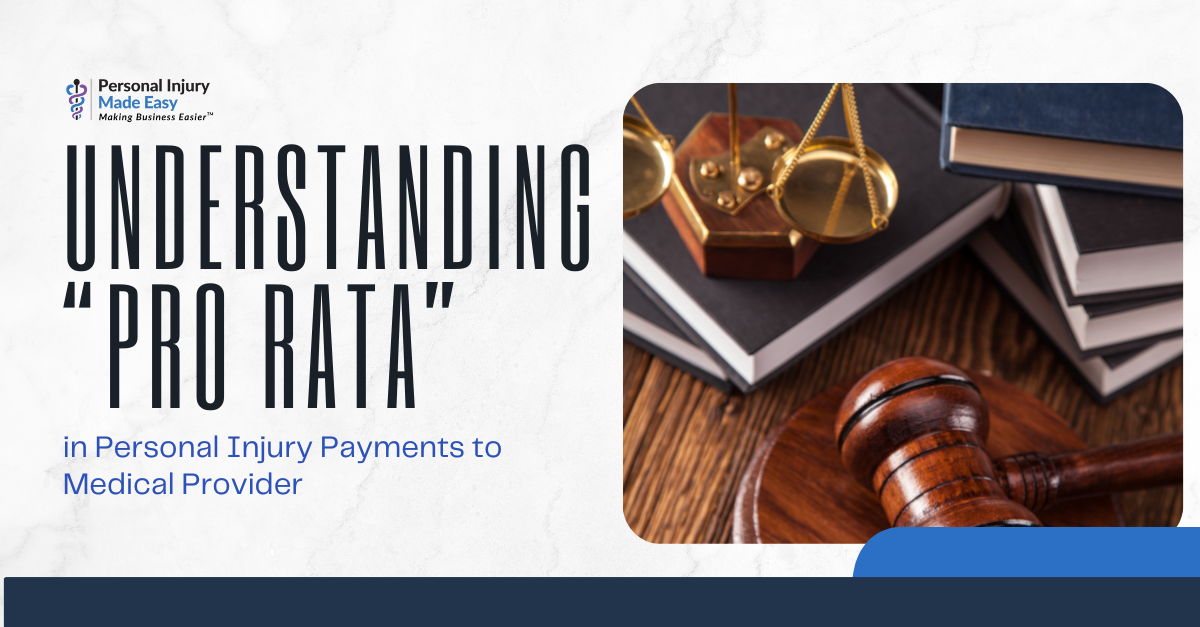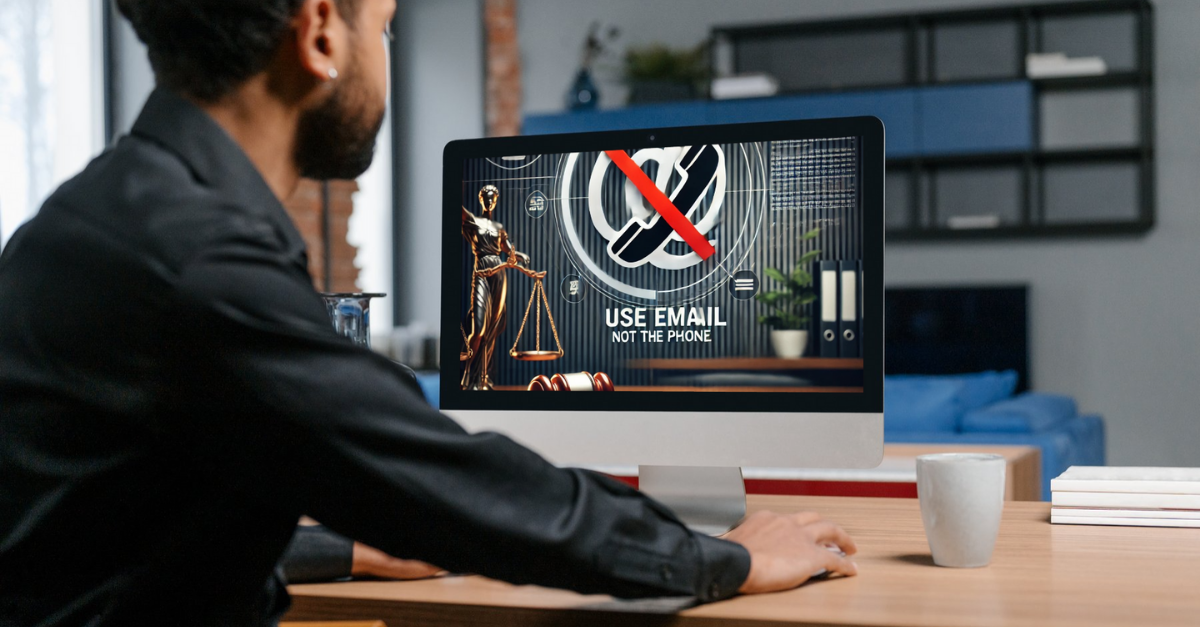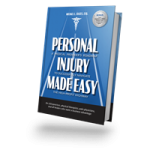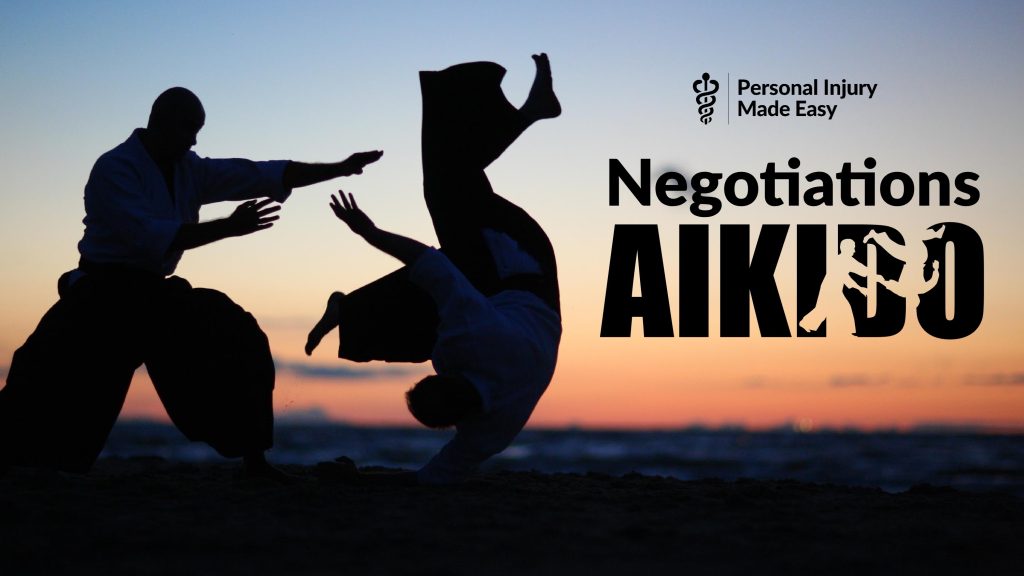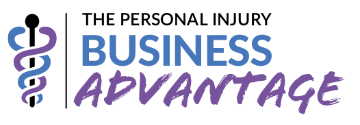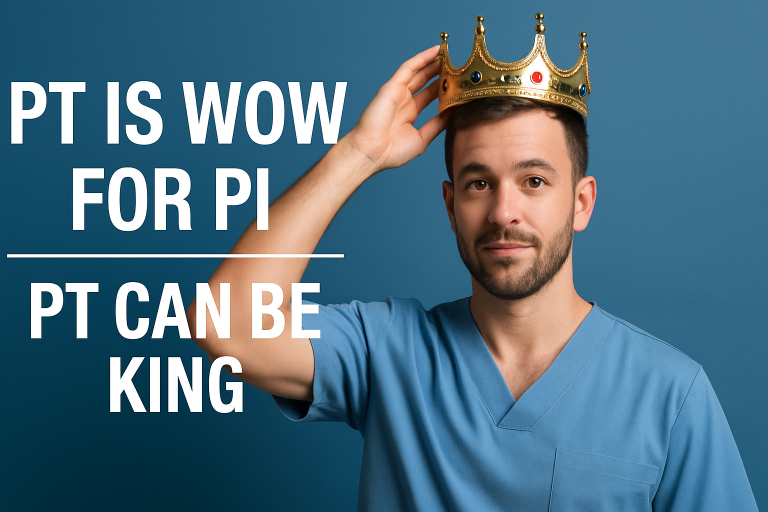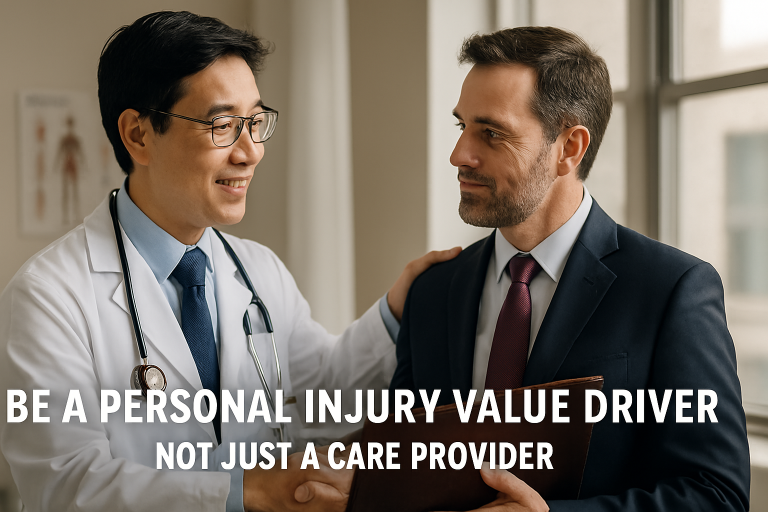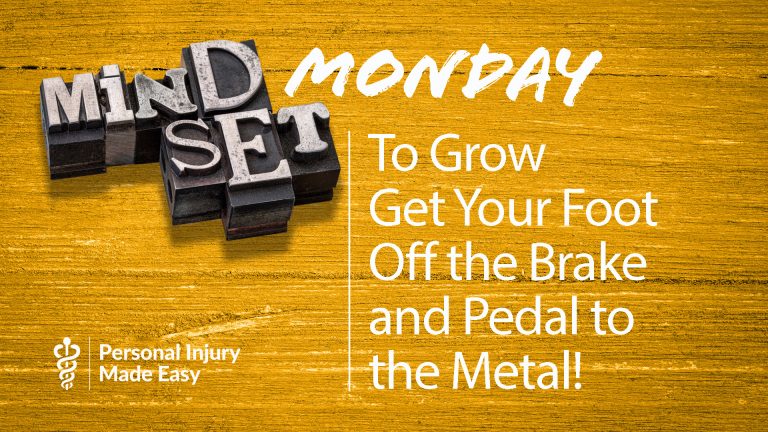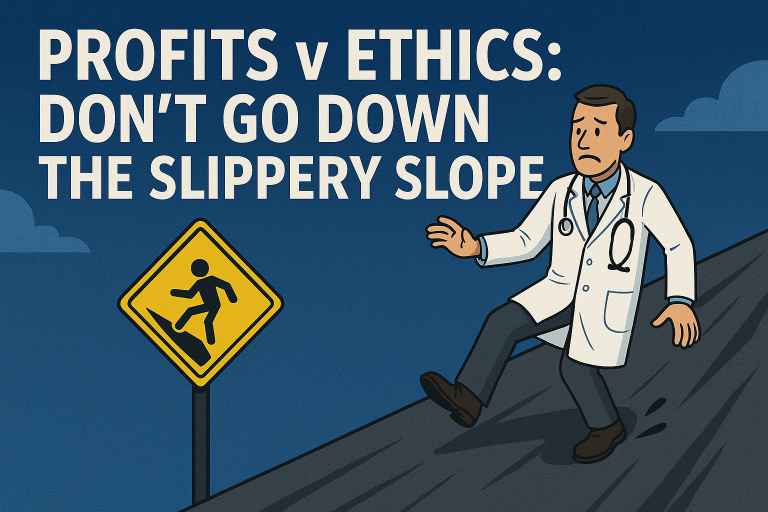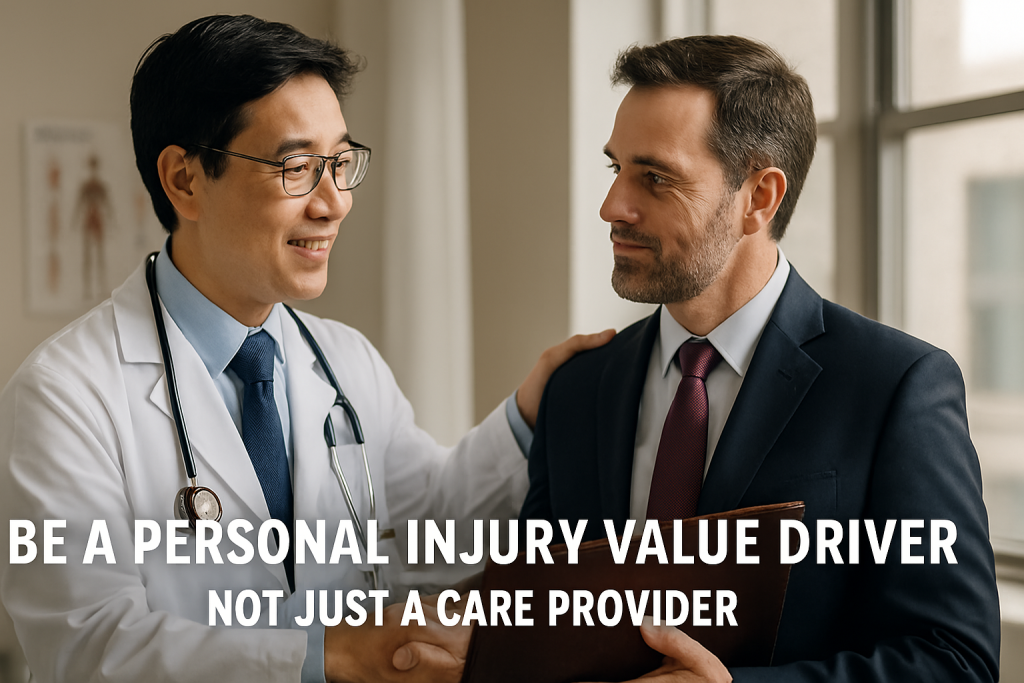
Be a Personal Injury Value Driver, Not Just a Care Provider
Because You Can Help Make Even Lesser Attorneys Better Advocates
Today we’re talking about something bigger than just running a good practice. We’re talking about transforming your impact — on your patients, your peers, and the law firms championing the financial aspect of your patient’s personal injury case.
The goal? To become a personal injury value driver, not just a care provider.
What does that mean? It means understanding that you have the power to influence the entire outcome of a PI case — not just the health of the patient.
In fact, when you do PI right, you can even help make lesser attorneys into better advocates — all because you are doing your part better than others. And you can.
Let’s dig in.
It Starts with Doing All Areas Right
Success in personal injury isn’t about just being “good enough” clinically. It’s about mastering every piece of the process:
Proper Diagnosis — capturing the trauma, and a complete picture of all injuries.
Storytelling Documentation — communicating the “before” and “after” and the road to recovery, clearly and humanly, using specific ADL’s (activities of daily living).
Medically Necessary Treatment — nothing excessive, nothing missing.
Timely Referrals — to the right imaging and specialists (if necessary) at the right time.
Reasonable, Defensible Billing — charging what’s supportable with third-party support.
When you consistently hit all five of these, you aren’t just treating patients — you’re driving up PI case value. It’s why I spend so much time on this with the members of my coaching program.
There’s one particular aspect we are going to emphasize from the above: storytelling documentation.
Why You Hold the Power: Proximity and Trust
Let’s be clear:
If a pain physician, orthopedist, neurologist, or other MD is involved, it’s likely a more severe injury situation with significant health impact, and even the recoverable damages just took a step higher — sometimes in a big way.
As a rehab provider — whether you’re a chiropractor, physical therapist, acupuncturist, or other specialist — and whether a soft-tissue injury situation or post-surgical rehabilitation–you will see the patient far more than any law firm ever will.
Think about that.
You are at the ground level. You are living the patient’s journey with them.
- You hear about the sleepless nights.
- You notice the subtle limps, the compensations, the live changes and the emotional toll.
- You catch the setbacks — and the breakthroughs.
Meanwhile, the attorney gets phone calls, maybe an intake form, and the occasional update.
You are closer to the real story than anyone else. And that makes you uniquely positioned to lay out the patient’s injury, affect, journey, and recovery in a way the legal team often can’t see on their own.
It’s even broader than that. In PI, unique to medical treatment, there are a host of non-medical specialists reviewing your care and trying to understand what you did, why you did it, and the impact: attorneys (plaintiff and defense), law firm staff, insurance adjusters, judges/arbitrators/mediators, juries and even your own patient. So how you go about educating this non-medical group is a keystone to value driving.
But only if you choose to.
Tell the Healthcare Story in Human Terms
Here’s where many providers miss the mark: They document what happened… but not in a way that helps anyone tell the full, human story.
Good PI documentation isn’t just clinical. It’s storytelling.
- Use everyday language.
- Paint the picture of the patient’s limitations, struggles, and improvements.
- Explain any perceived gaps in treatment.
- Identify any pre-existing injuries and how this PI incident exacerbated things.
- Highlight how injuries affect their daily living, work, hobbies, and family life.
In fact, find that “one thing” that matters most to your patient that they can’t do or is far more limited, that means the very most to them (e.g., playing with their children), and document that before the accident, right after the accident, and the road to getting back to pre-injury status or if that will never occur (and the extent).
When you do this:
- The patient’s attorney better understands what to argue and is supported.
- The defense attorney can ascertain the impact of that story to a judge or jury.
- The claims adjuster sees a fuller picture and the risk exposure.
- The jury — if it gets that far — connects emotionally, leading to higher verdicts.
Your documentation can make pain and suffering come alive and influence — or leave it flat and forgettable.
Storytelling documentation is not fluff. It’s precision storytelling, through a medical lens, that gives life to injuries, pain and suffering.
And when you do it well, even a less skilled attorney becomes a much stronger advocate. All because of you.
The Key: Learning What Not to Do and What to Do
If you take something from this article, take this:
Success in PI isn’t just about what you do — it’s about what you avoid.
It’s learning:
- Not to be an accident reconstructionist creating a liability issue
- Not to over-treat or under-treat
- Not to overbill or under-document
- Not to write sloppy notes that confuse rather than clarify
- Not to delay referrals that could have strengthened the case
And it’s learning:
- To diagnose thoroughly
- To document clearly and with storytelling
- To treat based on medical necessity, not assumptions or requests
- To communicate in non-medical speech that anyone can understand
- To bill properly and that’s supportable
Those are the nuances. Those are the difference-makers. Those are the Value Driver moves.
Closing: Step Into Your Full Power
So, I leave you with this:
You are not “just” a provider. You are a critical architect of medical justice and healthcare recovery from pain and suffering caused by PI trauma.
You have a bigger role to play — if you choose to.
Become a Personal Injury Value Driver. Raise your standard. Own your impact.
And you won’t just heal more patients — You’ll lift the entire system up with you.


